Kenya Reforestation
Sequestering carbon, providing wildlife habitats and helping a local community
With Carbon Footprint you can support local communities in the Great Rift Valley, Kenya. Through our tree planting programme you can help:
- Offset CO2 emissions*
- Reduce poverty
- Provide wildlife habitats
- Create a brighter future for project team members including orphans and people living with HIV / AIDS
* The official carbon offsetting is achieved through the retirement of credits from a Verified Carbon Standard (VCS) project. See the explanation of Tree Buddying below for more details.
Tree Buddying Concept
For every tree that you pledge, a tonne of carbon will also be saved through supporting the VCS Tree Buddying programme. In this way, you can be confident that your emissions are immediately offset through high quality internationally verified carbon offsets, in addition to the trees that will be planted on your behalf, which will continue sequestering additional carbon emissions as they grow during their lifetime.
Gallery from Past Planting Events
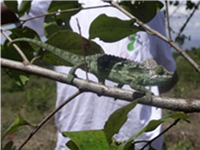
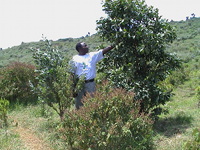
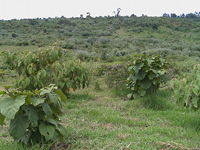
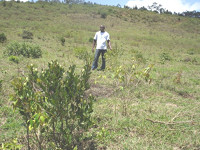
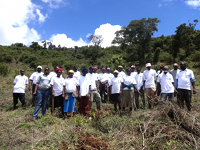
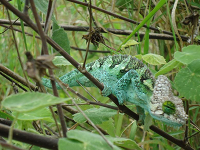
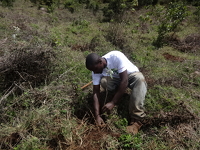
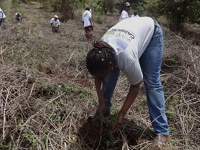
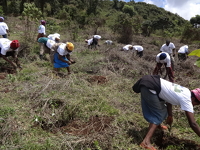
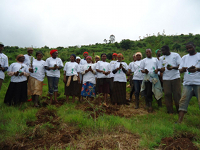
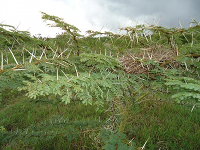
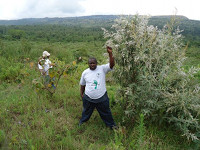
2024 Trees Update
Take a walk with Project Leader Mburu Waiganjo who shows you the amazing progress made this year
2023 Trees Update
Project leader Mburu Waiganjo summarises all the actions in words & pictures . Over 100 000 trees planted this year.
2022 Trees Update
The Kenya project highlights the importance of having a great coverage of vegetation in the forests. Without, the springs and rivers dry up, soil erodes, wildlife emigrates which can lead to human-wildlife conflict. This can lead people to be displaced and homeless; also, animal species can become sparsely populated which can drive them to endangerment as the likelihood of reuniting the population is slim.
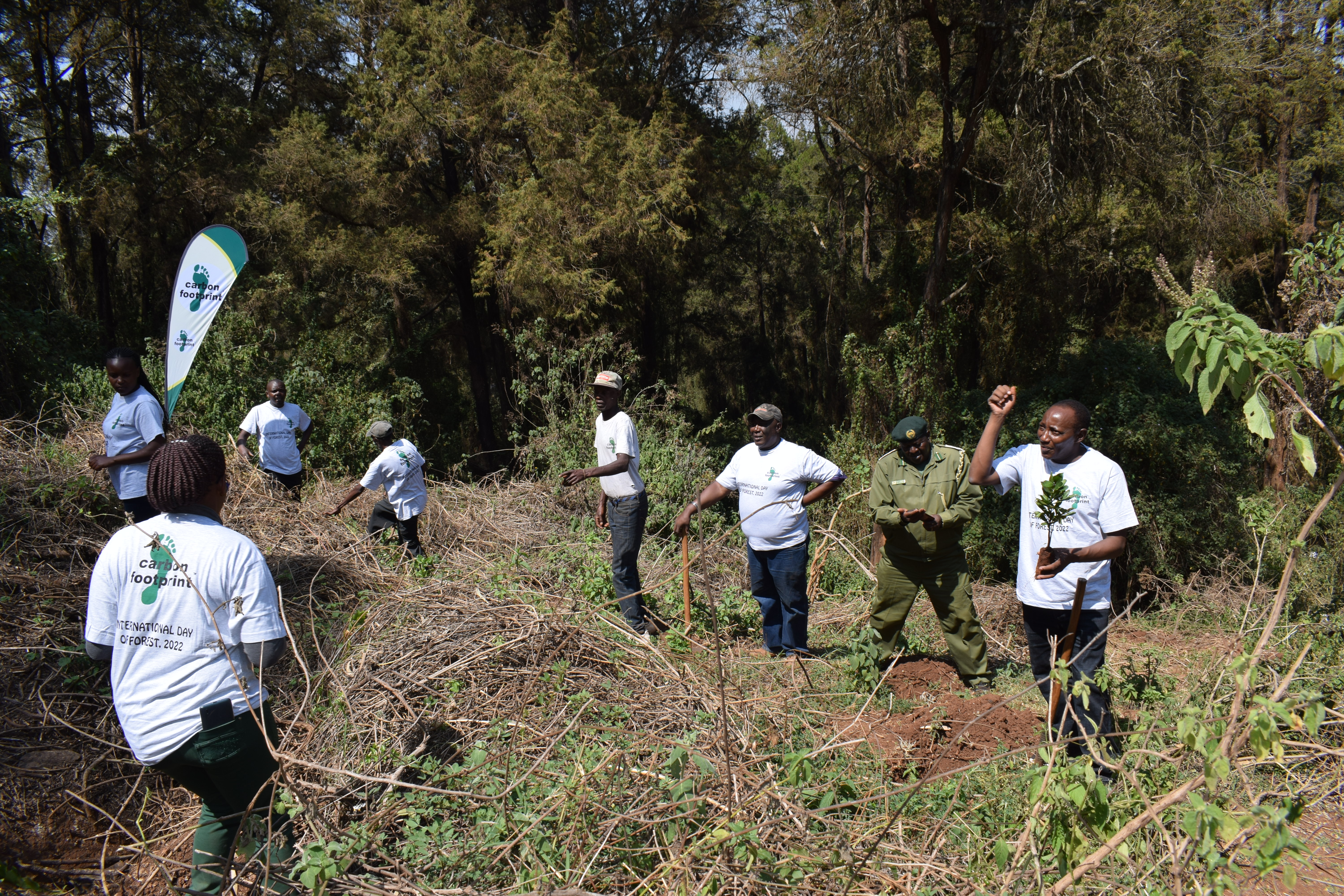
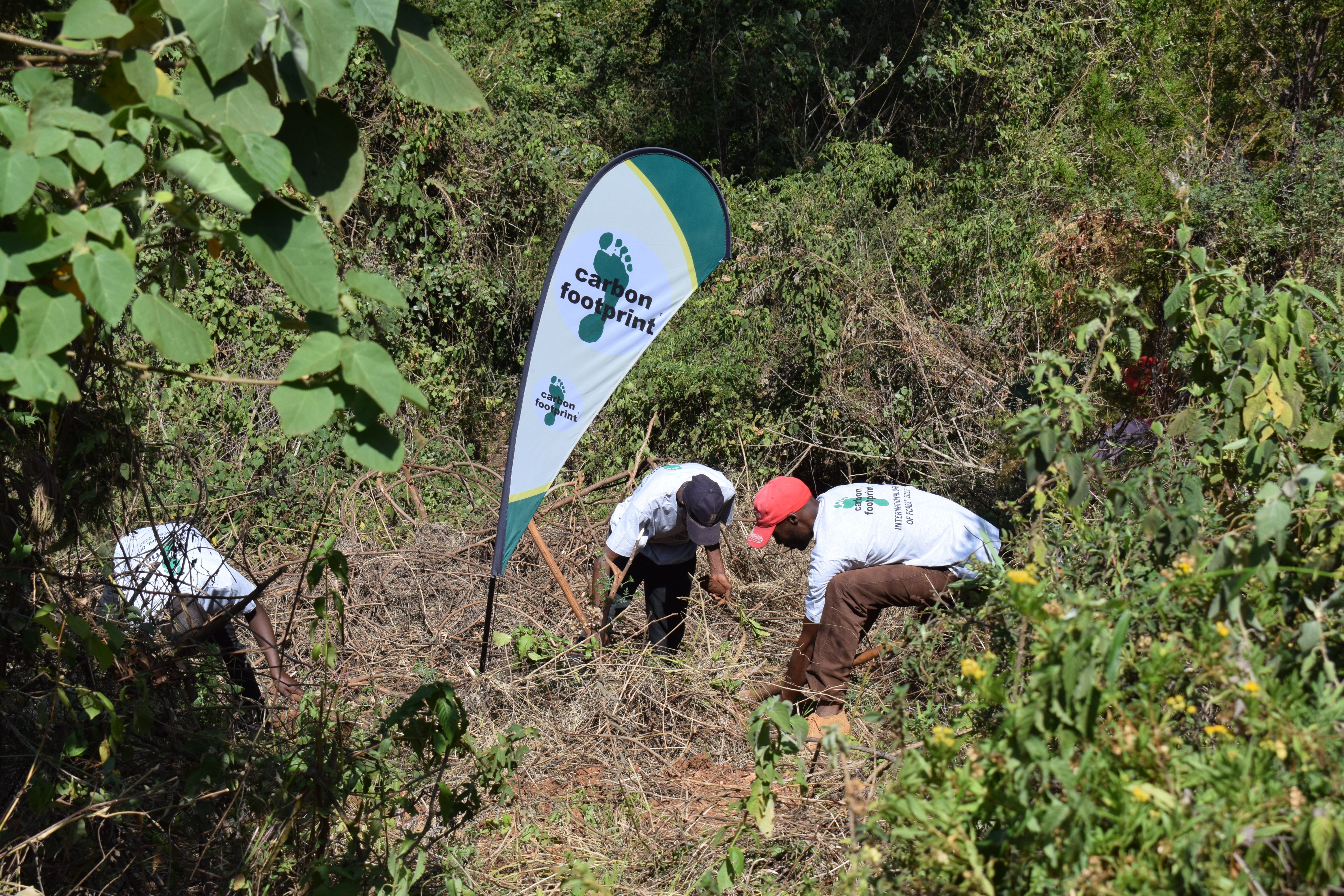
The Kikuyu escarpment forest has an array of different species from birds to butterflies. The environment is also a key source of water for the surrounding community which is why protecting it is so important. Due to logging for timber and fuel, overgrazing and charcoal, burning the forest has become wounded and depleted.
The forest ensures that the climate and rainfall is suitable, and a consistent harvest is met for the people of Kenya. Considering the restoration is near community farms it is highly important that the community regains their micro-climate that provided them with a great harvest. The new plantings will close the sparse parts of the forest which should ensure a microclimate is built for the community around the forest. The goal for the rest of the rain season is to plant an additional 45,000 trees which will benefit the agriculture in the neighbouring farms and the climate.
Sustainable production and consumption of food will be enhanced by the tree planting project. Trees can provide a micro-climate suitable for growing different types of vegetables, in the warm weather, trees can create a cooler, damper micro-climate which allows the crops to stay shaded and avoid too much sunlight. Additionally, trees need water to survive which means their roots will have access to water. For the other plants this is beneficial as there will be more water accessible for them. This can help agriculture as lots of highly nutritious veg is tedious to grow and can be damaged by intense heat or light.
2022 Planting Update - International Day of Forests
Our project is now one of the most respected forest restoration programs in Kenya and this is evident by the fact that we have for the second time been chosen as the hosts for the commemoration of the International Day of Forests, tree planting. For the International Day of Forests, 2022 we planted 2000 trees to rehabilitate and restore a highly degraded section at the hedge next to the community farms. This section requires about 20,000 trees to return to a healthy status. 20,000 holes are ready for tree planting when we get the rains. The forest–adjacent community is eager to have this section of the forest restored as they have lost the micro-climate that previously enabled them to produce peas and spinach in large quantities much earlier than the rest of the farms away from the forest.
We also have two other planting sites that where holes are ready for planting on a wetter area. These areas will close the gaps at the edges of the site of successfully rehabilitated forests. We had left these areas as they were prone to grazing but now that the Kenya Forest Services have declared them grazing free zones, we now can fill them up with trees. With COVID-19 cases drastically reduced and restrictions relaxed now, we have more team members engaging in our forest work and the pace of forest restoration will be much faster. The tree planting work has helped to support our teams and helped them stay strong over these challenging times. Since Christmas 2021, we have planted 15500 trees and plan to plant another 45000 trees in all during this long rain season. We look forward to a busy season of tree planting and to updating you soon.Mburu Waiganjo, Project Leader
2021 Planting Update
Read Project leader, Mburu Waiganjo's latest report & see video/photos
New Ways of Working Keep the Project on Track
The year 2021, just like 2020, has been ravaged by the COVID– 19 pandemic with the accompanying curfews, lockdowns and movement restrictions which affected our way of normal work.
In mid-February, we had embarked on a tree planting to replace the withered trees but it was short-lived as we were back into restrictions and lockdowns.
After the lockdowns, we had to adjust to having more days to transport the trees to the forest rather than on the planting day, using more vehicles to transport and allocating portions for individuals to plant but eventually planting the normal way as a team while exercising physical distance
We planted during the long rains season and also during the national tree planting launch that we were privileged to host, in total 6000 trees were planted. The team continued with planting additional 8000 trees during the week after the launch
The project continues t provide work and income to the team members and in many cases their relatives who have now come to live with them.
Besides the Government of Kenya has appreciated that we are one the most sustainable and long-lived community based organizations that is working in the forest sector and thanked us for our immense contribution to forest restoration and conservation. They have promised to send some groups to us for bench-marking and information sharing which we shall readily offer.
Though most of us in the group have been indirectly affected by the wrath of the COVID-19 pandemic, we all agree that it could have been worse were it not for our reforestation project
Over the next 3 months we hope to be planting another 30,000 to finish a challenging year.
2020 Planting Update
Read Project leader, Mburu Waiganjo's latest report & see our latest video.
Despite the Challenges our Young Forest Grows with Burgeoning Biodiversity
The year started very well with lots rains continuing from 2019 all throughout January and early February. We therefore continued catering for the trees planted in the previous year with spot weeding and elimination of some parasitic climber vines that can choke the trees.
Unfortunately, as we got to March, the global COVID-19 pandemic caught up with us and we had to stop all activities and obey the government’s ‘stay at home’ orders. We already had 10,000 trees ready for planting and the holes were also ready.
Fortunately, in May, we were allowed to go back to the forest albeit following strict protocols of having soap and water for hand washing, maintaining physical distance and wearing a face mask, we quickly continued with forest work. We planted the 10,000 trees which we continue spot-weeding.
We are ready with another 10,000 trees soon to be planted once the ground is adequately prepared. During the lull in planting many of our prepared holes got waterlogged so we need to prepare again.
COVID-19 Pandemic & Hardship
The financial resources from the project coupled with team members have sources of income from the dairy cows, traditional chicken eggs together with the small businesses that they have since established completely cushioned us from these very tough Covid-19 times. Some of the relatives who moved upcountry when the city closed and were unfortunately caught up with the cessation of movement orders had to be hosted by our team members, they even wanted to participate in tree planting but the limitation of the numbers participating could not allow.
Team member Joyce Gachoki says “I have never hosted a person for a week - let alone an entire family of four for over a month - but since we had some advance payment and also continued working later during the lockdown while the visiting family also assisted in feeding the dairy cows and chicken on my small garden, I managed without much hustle but all this because of the income I get from working for the reforestation project. We were also lucky as we sold avocados which were plenty this season.”
The stories are the same for all team members who have managed to weather the pandemic - they were able to feed the children well, they seem to eat more while at home though.
Team member Njehia’s tree nursery has grown and he is now selling more grafted Hass avocado tree seedlings. He also provided most of the trees we planted in May.
Thanks to the Reforestation project, we have gained the necessary financial resilience that came in handy during the very tough Corona virus pandemic, we couldn’t appreciate more.
Growing Biodiversity & Looking Forward.
We continue with our partnership with community members who have perched beehives within our forest. What is amazing is that - despite the global cry of declining bee numbers - the bee keepers seem not to suffer such fate, there are plenty of bees and they are harvesting their honey and readily able to sell it generating much needed income.
We believe that, besides getting their nectar from the forest, they must also be getting from the forest- adjacent farms thus also helping with pollination of crops and fruits hence offering an essential ecosystem service of supporting food production.
The forest has really grown to become thick and beautiful. The sound of birds is nice music to those who venture near the forest especially during the COVID-19 lockdown when people got bored and found solace in the healthy forest environment. We are getting requests to develop nature trails within the forest for people who want to venture inside and we shall plan with Kenya Forest Service (KFS) for this purpose..
2019 Planting Update
Project leader, Mburu Waiganjo's latest report...
We now have over 180,000 trees planted since we started. The trees have survived extraordinarily well and nowadays the KFS is bringing other community-based organisations interested in tree planting for benchmarking tours.
The community recognises the changes to the livelihood of some of our team members who were previously dependent on selling forest collected firewood for survival but who are now sustainably gainfully occupied as forest defenders enjoying better social status of a regular job and income including being dairy cow owners which is prestigious. Some of the welfare, empowerment initiatives like indigenous chicken rearing, zero-grazing cow and planting of avocado fruits are now bearing fruits with alternative incomes for our members. All our members are comfortably bringing up their children most of who are in school and in colleges. There are those whose children are in employment after attending college.
During a party to celebrate 10 years for the tree planting, members reflected on the desperate life that they lived before especially the women who had to walk for kilometres in the forest, dodging forest guards and dangerous obstacles to collect firewood and go sell it to the shopping centres for very little money.
Besides the community tree nurseries that produced 10,000, two of our members have produced 10,000 tree seedlings and sold over 5,000 to other members of the community who are embracing tree planting. The next big opportunity for them is to produce grafted Hass avocado tree seedling that are in huge demand and the seedlings are lacking.
The community really appreciates the drastic changes that our planting has done in the fast restoration of the formerly hugely degraded forest to the thick, healthy, species-rich forest we now have.
We now have an abundance of bird species, chameleons and many butterfly species, dik diks, antelopes, red forest duikers, hares and elands, biodiversity on the project site has improved tremendously.
We appreciate and are proud in playing a role in the growing positive attitude towards tree planting in our country and globally. Today every group including men, women, youth, church and other organisations are competing for an opportunity to plant trees in their lands or public places.
Latest updates on Our News Page
2018 Planting Update
Our team in Kenya have been very busy planting.
Project leader, Mburu Waiganjo told us 'What makes me personally proud is the fact that our project has reversed a forest degradation trend and the 'don't care' attitude towards the forest conservation that had prevailed has now gone and yielded the current lush green forest that is teeming with wildlife noises from the birds, the beauty of the butterflies and other insects which are evidently useful in pollination of crops in the forest-adjacent farms. The community's possession and ownership of the forest as their communal resource and source of livelihood and their enthusiastic participation in the project also is a unique progress that accompanies the project's growth.'
We have planted over 150,000 trees in Kenya's Great Rift Valley over the past 10 years.
- Over 20 different species of native broad leaf trees - including Olea Africana, Cordia Africana, Ehretia Cymosa
- Significant community benefits - providing education, new skills and employment
- Water regulation provided via groundwater recharge
- Soil erosion and landslides averted
- Encouraging biodiversity on the planted sites - antelope, red forest duiker, eland, dik diks, many bird species, chameleons and many butterfly species
This season, 2 nurseries established within the community will be providing 6,000 of the 20,000 trees already scheduled for planting. In a neighbouring community, further trees are being grown for planting by a women's group and farmer field school.
Latest updates on Our News Page
Plant for the Planet
Carbon Footprint Ltd have received endorsement from the United Nations Environment Programme (UNEP) for our reforestation efforts in The Great Rift Valley. All trees pledged and planted by Carbon Footprint / ESCONET are being included in the Plant for the Planet: Billion Tree Campaign, across the globe to help avert damaging and economically debilitating climate change.
"We have but a short time to avert damaging and economically debilitating climate change. Forests are natural and economically important 'carbon sinks'. Globally, forest cover is at least one-third less than what it once was. It is time to reverse the trends, it is time to act."
Achim Steiner, Executive Director, UN Environment Programme
The Challenge
The Kikuyu escarpment forest with its great mixture of both large and small wildlife animals, birds and butterflies, has been the beautiful gateway to the Great Rift Valley until degradation trend struck. This environment is the source of water and thus livelihood to the neighbouring communities.
In just a few years, wanton and deliberate destruction of the escarpment environment through charcoal burning, logging for timber and fuel wood, ring-debarking of medicinal trees and overgrazing has resulted to virtual depletion of forest vegetation cover. This has in return resulted to drying of springs/rivers/streams, soil erosion, emigration of wildlife/birds, scorching sun, human-wildlife conflict and the scarring of once a beautiful scenic landscape that generated some income through tourism.
The worst result from this environmental destruction was the ethnic clashes witnessed recently between the pastoral Maasai and the farming Kikuyu over use of the dwindling water resources at the base of the escarpment. This resulted in unnecessary deaths, injuries, loss and destruction of property and displacement of many families.
The communities have due to the negative climatic changes become even more dependent on the forest for their livelihoods. The women and girls move longer distances in search of fuel wood and water, exposing them to danger of attacks and sexual assaults. The Maasai have to bring their cattle to graze in the forest. With the loss of flora and fauna, the tourism income is dwindled, bringing the curio business down with it.
This project aims to plant 100,000's of indigenous trees on the worst degraded areas.
Additional Social and Sustainability Benefits:
- Poverty reduction through employment creation
- Water catchment areas will be conserved providing water/food security
- Birds, butterflies and other wildlife habitats will be conserved and others created
- Bees attracted by the trees in flowering seasons will benefit the community through sale of honey hence reduce poverty
- Sale of fruit will help the community earn extra income
- Nutritional Benefit from some of the fruit trees planted like the Avocado trees which are of great nutritional value
- Ecotourism will be promoted with better forests giving alternative occupation to those previously engaging in destructive forest activities
- The pastoral communities will have pastures for their animals during drought times
- Some of our teams have orphans and Persons Living With HIV/Aids (PLWHA)
- The trees also assist in the prevention and control of soil erosion
- Beautification of our locality and the roads


Following a QAS approved carbon footprint calculation, this tree planting package (which also includes retiring Verified Carbon Standard (VCS) credits from registered projects) meets the requirements under the Quality Assurance Standard (QAS) for Carbon Offsetting.
More information on the QAS/Watch the video
As the carbon offsetting is guaranteed by retiring high quality VCS credits, this Kenyan tree planting project will meet BSi's PAS 2060 guidance on carbon neutrality, therefore assuring your carbon neutral claims.
Already calculated your carbon footprint and ready to offset?Contact Us if you need to offset over 100 tonnes of CO2 to choose your specific project and get the best prices |


